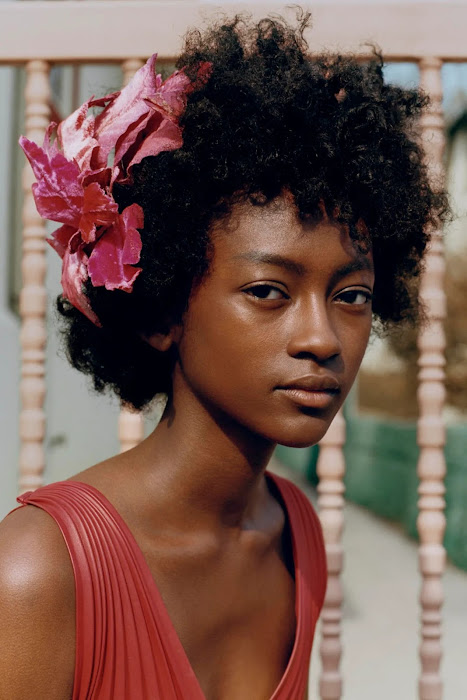Tyler Mitchell's photographs are "a counterpart to the pernicious stereotypes that have long dominated visual culture" by showing Black people in different ways they might "look, dress and act", for instance, enjoying leisure time. Probably due to their soft light, pastel colours, and settings, Mitchell's photographs do not look politicial at first glance (via).
Mitchell was born in Atlanta in 1995. Skateboarding led him to photography, he then studied film and television at New York University and, in 2015, self-published a book about skaters in Havana. Three years later, aged 23, he was commissioned to photograph Beyonce for a Vogue issue. He became the first Black photographer to shoot the cover of Vogue (via).
This idea of my community and my friends, young black men and women, being able to enjoy pleasure, or leisure time — that’s revolutionary. I think about the pleasures and the freedoms we’ve been denied historically — or the way that free time and leisure time, for us, have been framed as something potentially violent.
Tyler Mitchell
Mitchell seems to have "a clear sense of his own historical moment". He believes that being a Black photographer carries a different weight since just a short while ago Black people could not afford cameras (via).
I’m indulging myself in the way that making pictures for me is a form of protection. I’m able to create and live out these little moments or small figments of dreams in which Black people exist within the space of a frame where they are unencumbered. They’re not having to be hypervigilant about social and political dangers, the hypothetical threat of a white gallery space, or any of these things that remind them to get out and stay out.
Tyler Mitchell
Mitchell's work was partly inspired by Tumblr where he noticed that most of the images of free and sensual young people showed whites. He uses the documentary approach to capture Black identity "in an equally close and vulnerable light" (via).
People like Ryan McGinley and Larry Clark were just two examples of images that seem to proliferate the most on those types of platforms. They seem to get the most re-blogs or people would always repost them. Their most iconic images would usually be white youths, very sensuous and beautiful, enjoying life in groups in Paris or on road trips, you know So I’m thinking about my experiences and trying to make art about my experiences in the South. Being black and middle class, I think about the self-policing that has to happen within our community here. It’s baked into our psyche that we’re maybe not allowed to, or that we’re not supposed to, behave in those ways outwardly in society or perform those sentiments of joy… Obviously, we do enjoy leisure time, that’s a global thing. But my work is about bringing forward these ideas of leisure and play as radical things, because we’ve societally, politically, and within ourselves—in our psyche—been prevented from enjoying those freedoms. Utopia, by definition, isn’t achievable. Photography, by definition, is about constructing an image and framing an image and a point of view on the world. I’m playing with these ideas, the fantasy of things that are not real, or that I would want to be real.
Tyler Mitchell
I think the images suggest [a] core fundamental resilience, radiance and full human agency that Black folks command, even in environments that tell them otherwise.
Tyler Mitchell
- - - - - - - - - - - - - - - - - - - - - -
photographs by Tyler Mitchell via and via and via and via and via and via




























So good!!!
ReplyDeleteThis is a brilliant photographer.
Delete